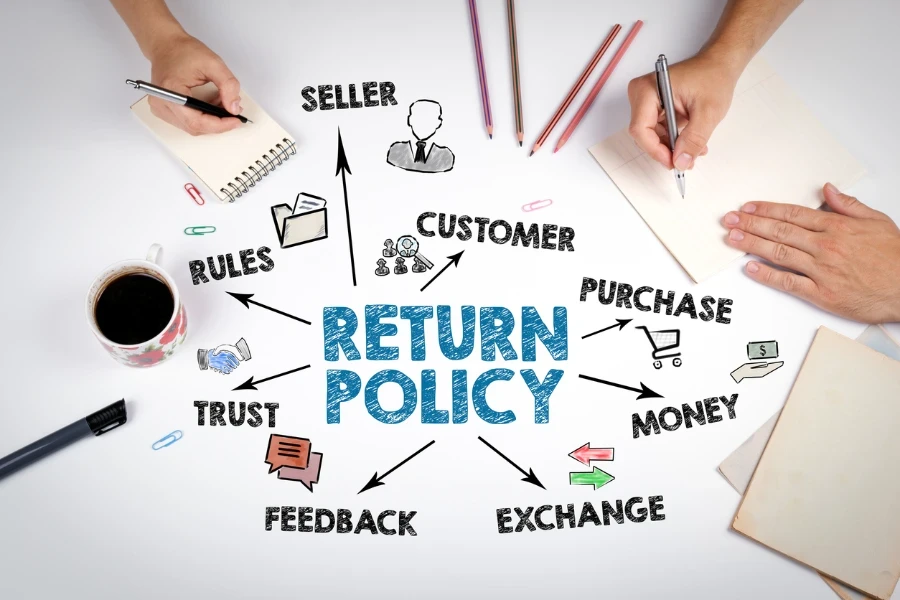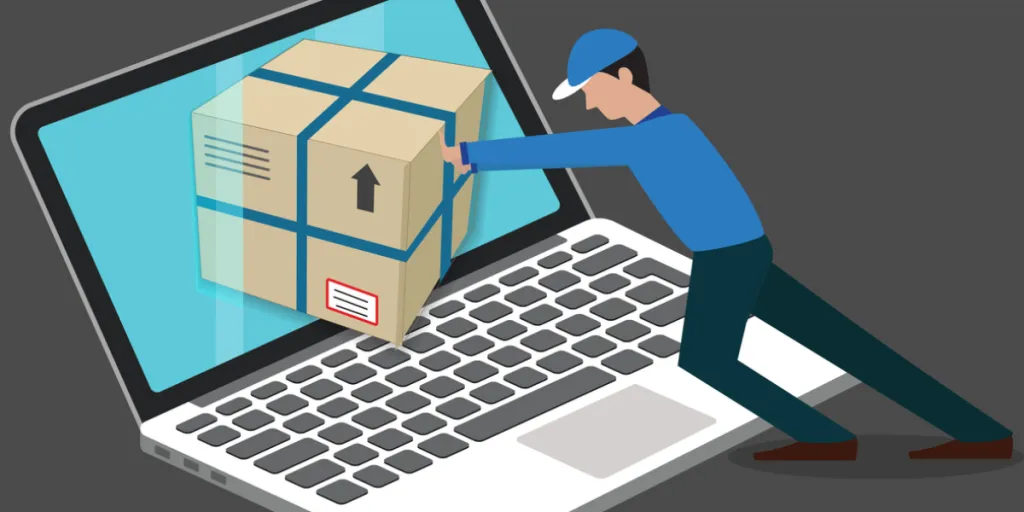While e-commerce businesses never want to see returns, they are inevitable for several reasons. So, it’s critical to be prepared for returns and do everything you can to streamline the process for your business and your customers.
Here, we will discuss everything you need to know about returns management so you can keep your customers happy and your business running smoothly.
Table of Contents
What is returns management?
The importance of returns management
How to reduce returns
Building a solid foundation for returns management
Step-by-step guide to implementing an efficient returns process
Analyze returns data for improvement
Final thoughts
What is returns management?

Returns management is the systematic and organized process through which businesses handle product returns. It involves a series of activities designed to efficiently and effectively manage the return of products, often aiming to minimize the impact of returns on the business’s operations and customer satisfaction. Returns management is a crucial aspect of the overall supply chain and customer service strategy for many companies, particularly in e-commerce.
The importance of returns management
Returns management is essential for e-commerce businesses, playing a pivotal role in customer satisfaction, brand reputation, and overall operational efficiency.
Returns management is not just about handling product returns; it’s about creating a positive customer experience, building trust, and turning a potentially negative situation into an opportunity for customer retention and business growth. E-commerce businesses that prioritize and excel in returns management are better positioned to thrive in a competitive market.
How to reduce returns
While some returns are inevitable, here are strategies you can implement to minimize returns in your online store:
- Detailed product descriptions: Use comprehensive and accurate product descriptions to help customers make informed decisions. Additionally, ensure all product information, such as specifications and features, is accurate and up-to-date.
- High-quality product images: Use high-resolution images showcasing products from various angles for a clearer understanding.
- Size guides and fit information: Include size guides and fit information for apparel to assist customers in choosing the right size.
- Customer reviews and ratings: Encourage and display customer reviews and ratings on product pages to build confidence.
- Clear returns policies: Communicate returns policies, including timeframes and conditions, to set customer expectations.
- Educational content: Create blog posts or videos offering educational content on product selection, care, and maximizing satisfaction.
- Effective customer support: Offer responsive and helpful customer support to address pre-purchase inquiries promptly.
Building a solid foundation for returns management

There are three critical things you need to build a solid foundation for effective returns management:
- A clear and transparent returns policy
- A user-friendly returns portal
- Effective communication channels
Step-by-step guide to implementing an efficient returns process
A seamless and customer-friendly returns process enhances customer satisfaction and contributes to operational efficiency. Here’s a step-by-step guide on how e-commerce businesses can implement an efficient returns process:
1. Create a user-friendly returns portal

An e-commerce returns portal is an online platform or section of an e-commerce website dedicated to facilitating and managing the returns process for customers. It serves as a user-friendly interface where customers can initiate, track, and manage returns for products they’ve purchased. The returns portal streamlines the returns process, making it more convenient for customers and e-commerce businesses.
Design an intuitive online returns portal that is easy for customers to navigate. Include clear instructions and guidelines for initiating a return.
Additional tip: Provide options for customers to select the reason for the return and attach relevant images if necessary; this can help your business understand trends and reduce returns in the future.
2. Automate returns authorization
Implement automated returns authorization systems to help expedite the returns process by automating approval for valid return requests. Utilize technology to set criteria for automated approvals, considering factors such as product condition and adherence to the returns policy.
Additional tip: Make it easy to obtain a return shipping label (or get details on a drop-off location).
3. Integrate with e-commerce platforms
Ensure seamless integration between your returns system and your e-commerce platform. This integration facilitates real-time updates on inventory, order status, and customer data.
Integration also helps in minimizing errors and reducing manual effort in managing returns.
4. Consider packing and shipping logistics
Wherever possible, encourage customers to use the original packaging to minimize damage during transit.
Collaborate with reliable shipping partners for cost-effective and timely return shipments. Provide a variety of return shipping options, including drop-off points and carrier pickups, to accommodate customer preferences. Providing flexible return options enhances customer satisfaction and increases retention rates.
Consider returns tracking and keep customers informed throughout the returns process to ensure they know what to expect.
5. Optimize reverse logistics and quality control
Reverse logistics refers to the process of moving goods from their final destination (typically the customer) back to the manufacturer, distributor, or a designated location for purposes such as returns, repairs, remanufacturing, recycling, or disposal. It is the backward flow of products through the supply chain, as opposed to the traditional or forward movement of goods from manufacturers to end-users.
Develop efficient reverse logistics strategies to handle returned items, including refurbishing, repackaging, or redirecting them to the appropriate location. In particular, streamline return shipping logistics to make the process as convenient as possible for customers.
Additionally, develop a robust process for inspecting returned items to ensure that products meet the necessary standards for restocking or resale. You don’t want returns to pile up; you want to see them back on the virtual shelves to be resold as soon as possible.
Analyze returns data for improvement

Regularly analyze returns data to gain insights into trends and areas for improvement. Analyzing e-commerce returns data is a valuable process that can provide insights into customer behavior, product performance, and areas for improvement within your business.
Here are a few things to consider when it comes to analyzing returns data:
- Determine which products have a higher-than-average return rate. Analyze whether these returns are due to specific issues, such as quality concerns, inaccurate product descriptions, or other factors.
- Analyze the time customers take to initiate returns after receiving their orders. Understanding return timeframes can reveal insights into customer satisfaction and potential product issues.
- Calculate the overall cost of returns, considering factors like shipping, restocking, and potential refurbishing or disposal costs. This analysis helps quantify the financial impact of returns on the business.
- Segment your customers based on their return behavior. Identify patterns among customer segments, such as first-time buyers, loyal customers, or those with a history of high return rates.
- Review customer feedback provided during the returns process. Identify recurring themes or specific issues mentioned by customers to address root causes.
- Analyze the geographical locations where returns are most prevalent. This information can help identify potential regional issues, such as shipping challenges or product preferences.
- Monitor changes in return reasons and frequencies over time. Seasonal variations, product launches, or marketing campaigns may influence return patterns.
- If your business operates on multiple channels (website, marketplace, brick-and-mortar stores), compare return rates across these channels to identify disparities and potential channel-specific challenges.
Use this information to refine product offerings, policies, and processes.
Final thoughts
Returns are a unique opportunity to learn more about your customers, build relationships, and improve your business. Take the time to optimize your returns management process to save your business money and benefit your customers.
By implementing the strategies in this guide, your business can turn returns management into a competitive advantage, ensuring long-term success in a competitive marketplace.








